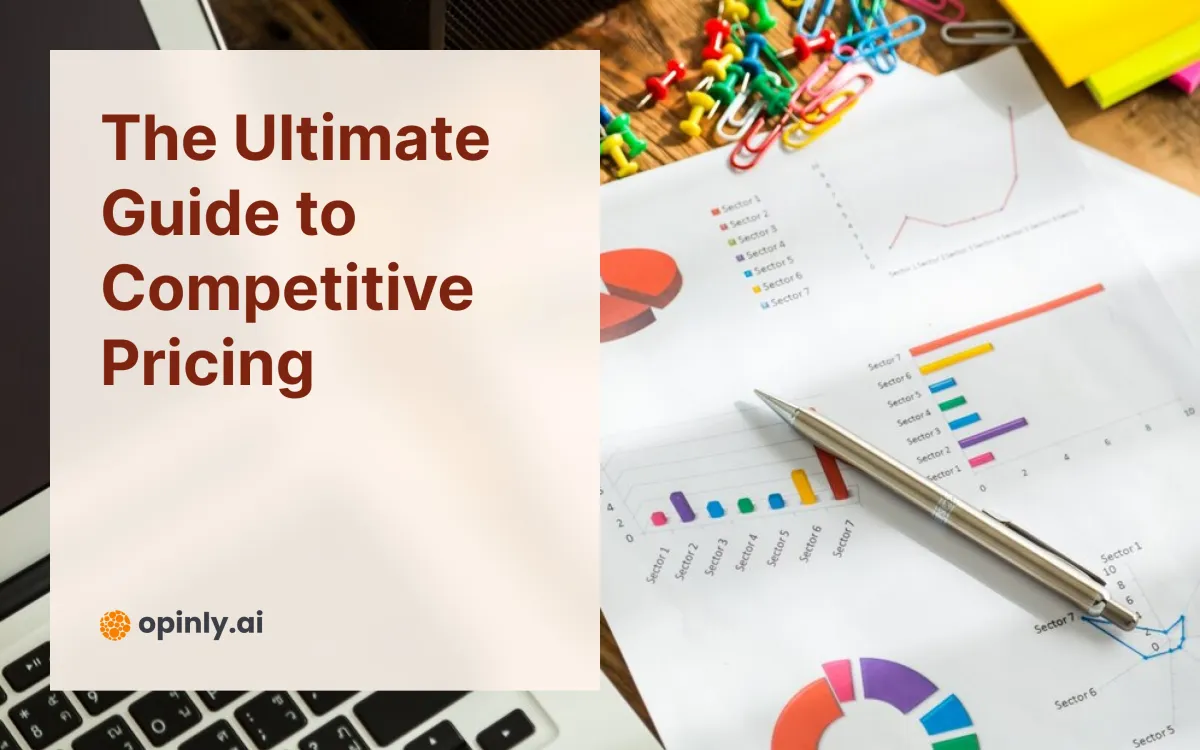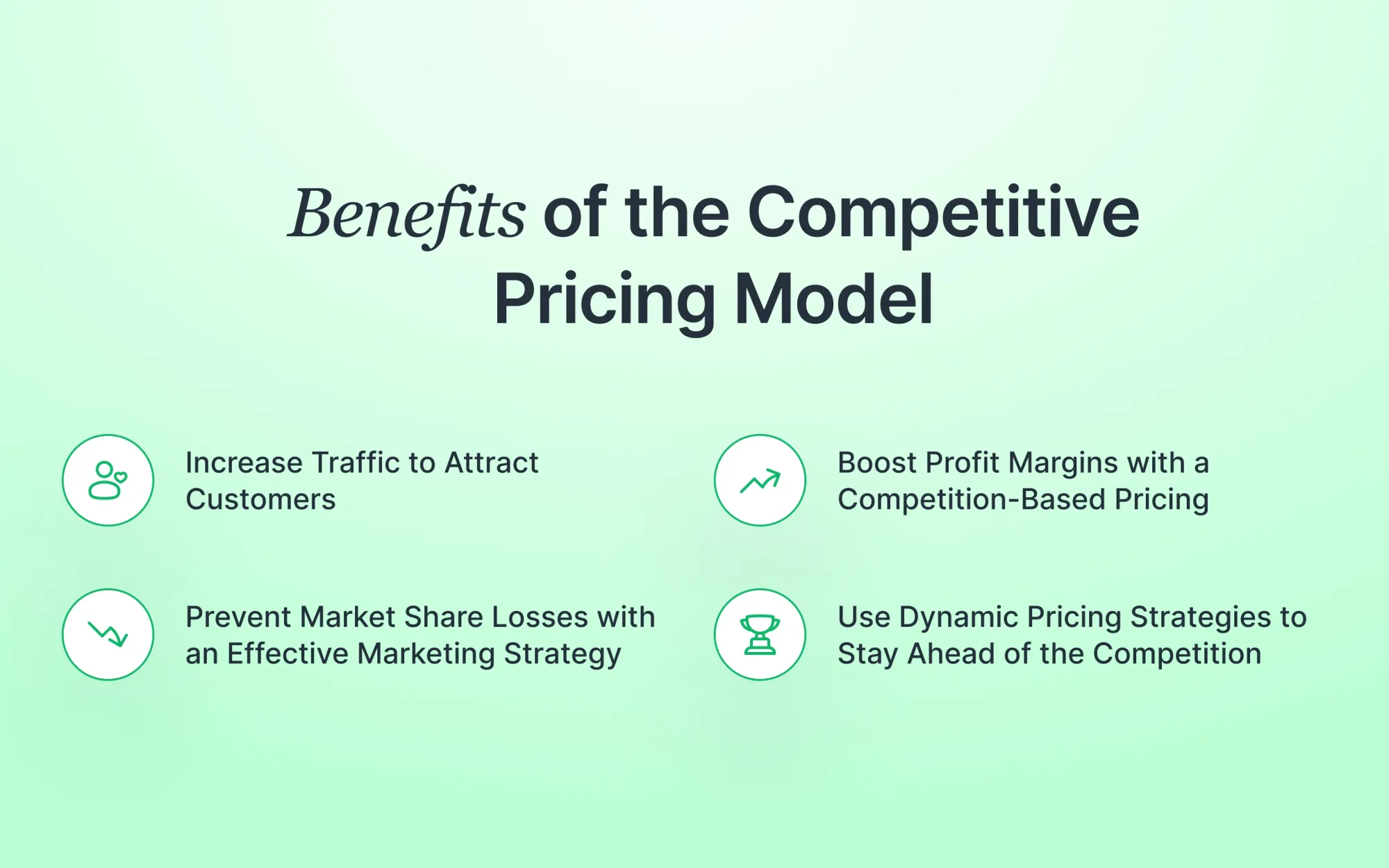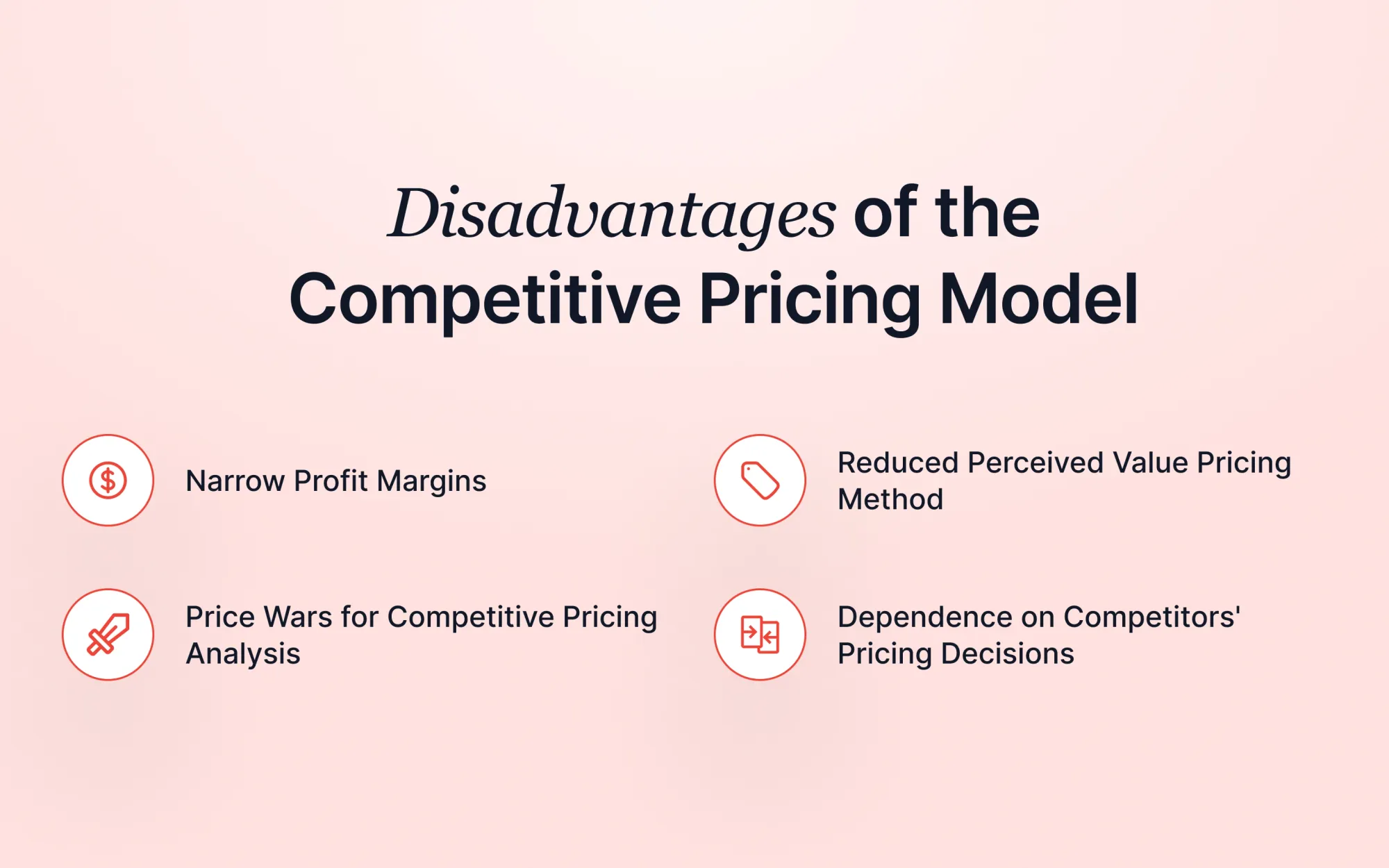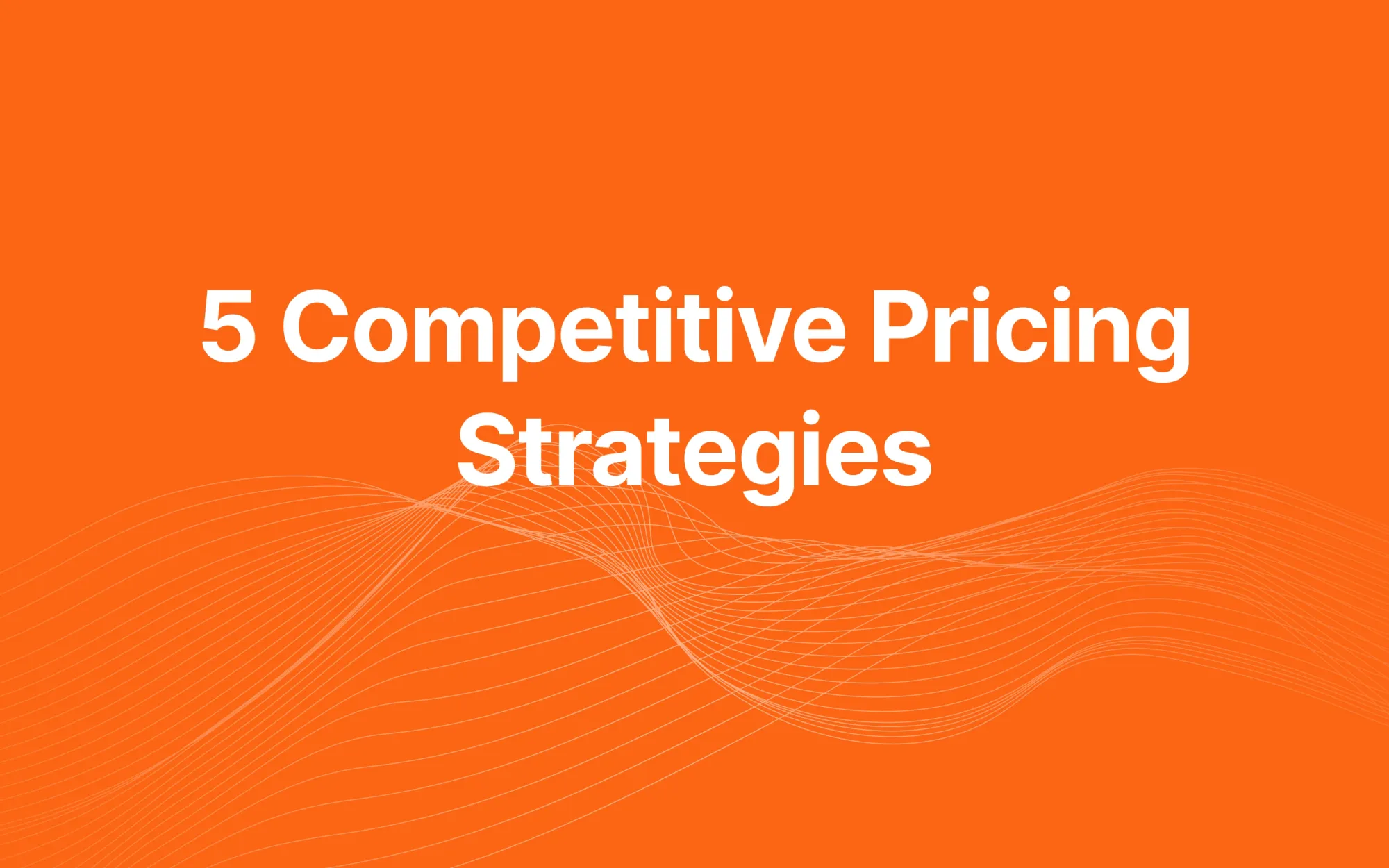The Ultimate Guide to Competitive Pricing
Discover the best competitive pricing strategies to set your price points for maximum market share and stay ahead of your competitors.

Pricing is a key factor in how customers decide what to buy. Figuring out the right prices for your products or services can be tricky, whether you have an online store or a physical shop. This can be especially tough for new business owners setting prices for the first time in a competitive market.
The prices you choose affect many parts of your business, like cash flow, profit margins, and how your products stand in the market. So, it's important to set them carefully to grow your business and stay competitive. Luckily, many businesses use a reliable method called competitive pricing to help with this.
If you're new to competitive pricing strategies, this guide will help you understand the basics. We'll explain what competitive pricing is, its pros and cons, and provide real-world examples to get you started.
What is Competitive Pricing?
Competitive pricing is when businesses set their prices based on what their competitors charge. This strategy is used both online and in physical stores to attract more customers and increase market share. To make competitive pricing work, businesses need to understand their competitors' prices and how customers perceive value.
A study by Google found that 87% of consumers think getting a good deal is important when making a purchase. So, businesses should consider their competitors' analysis prices when setting their own. Factors to think about include the business's costs, the prices of similar products, and customer demand.
Benefits of the Competitive Pricing Model

When you have detailed information about your competitors' prices, using a competitive pricing strategy can benefit your business in several ways:
Increase Traffic to Attract Customers
Whether you're starting a new business or have been selling for years, increasing traffic to your store—whether online or in-person—helps get your brand noticed. With competitive pricing, you can use discounts and tactics like offering lower prices than your competitors or running loss leader sales campaigns.
Example: If you own an online clothing store, you can offer a special discount on popular items that are priced lower than your competitors. This can attract more visitors to your site and increase your sales.
Prevent Market Share Losses with an Effective Marketing Strategy
Using competitive pricing strategies, especially with pricing software that captures real-time competitor data, helps you react quickly to changes in your competitors' prices. This allows you to make strategic decisions and avoid losing market share.
Example: If a nearby coffee shop lowers their prices, you can quickly adjust your prices or offer a special promotion to ensure your customers stay loyal and don't switch to the competitor.
Boost Profit Margins with a Competition-Based Pricing
Competitive pricing doesn't always mean lower profits. If your prices are lower than your competitors, you might be able to raise them while still staying competitive, especially if your products or services offer unique value.
Example: If you sell handmade jewelry with unique designs, you can charge a bit more than your competitors because your customers see the added value in your craftsmanship and unique products.
Use Dynamic Pricing Strategies to Stay Ahead of the Competition
Competitive pricing is the first step to using a dynamic pricing strategy. Dynamic pricing adjusts your prices in real-time based on variables like raw material costs, market demand, seasonality, inventory levels, and shipping costs.
Example: If you run an online electronics store, you can use dynamic pricing software to adjust your prices during peak shopping seasons or when certain products are in high demand, ensuring you remain competitive and maximize your profits.
Disadvantages of Competitive Pricing Strategy

Narrow Profit Margins
When you consistently set prices lower than your competitors to stay competitive, you might end up with very narrow profit margins. This can make it difficult to cover operating costs and invest in business growth.
Example: If a small local grocery store keeps lowering prices to match or beat a large supermarket chain, it might struggle to make enough profit to sustain the business.
Price Wars for Competitive Pricing Analysis
Engaging in competitive price tracking can lead to price wars, where competitors continuously lower their prices to undercut each other. This can harm all businesses involved and lead to unsustainable pricing.
Example: Two competing ride-sharing companies might keep lowering their fares to attract more riders, eventually reducing their profits and potentially harming their long-term viability.
Reduced Perceived Value Pricing Method
Constantly offering lower prices might make customers perceive your products or services as lower quality, reducing the overall value of your brand.
Example: If a premium bakery starts pricing its artisanal bread significantly lower to compete with regular bakeries, customers might start doubting the quality and authenticity of the bread.
Dependence on Competitors' Pricing Decisions
Relying heavily on competitors' pricing strategies means your business decisions are driven by external factors rather than your own unique value propositions and costs. This can stifle innovation and differentiation.
Example: If a tech company only sets its product prices based on what competitors charge, it might miss out on opportunities to highlight unique features or benefits that justify a higher price.
5 Competitive Pricing Strategies

1. Penetration Pricing
Penetration pricing is a strategy where a business sets a low price for its product or service when it first enters a competitive market. The goal is to attract customers quickly by offering a better deal than the competitors. By setting a low initial price, the business can gain market share and build a customer base more rapidly.
Once the business has established itself and gained enough customers, it can slowly start to increase its prices. This gradual increase allows the business to improve its profit margins while maintaining the customers who were initially attracted by the low prices. This strategy is especially useful for new businesses trying to break into a market dominated by established competitors.
Example: A new streaming service might offer a very low monthly subscription fee to attract users from established services. Once it gains popularity, it can slowly raise the subscription price.
2. Price Matching
Price matching is a strategy where a business promises to match or beat the prices of its competitors. If a customer finds a lower price for the same product at another store, the business will lower its price to match or even beat that lower price. This price intelligence helps to keep customers loyal, as they know they are getting the best possible deal.
By offering price matching to new products and new customers, businesses can prevent customers from switching to competitors just for lower prices. It builds trust with customers because they feel confident they are always getting a fair price. This strategy is particularly effective in markets where customers can easily compare prices, such as electronics or household goods.
Example: An electronics retailer might offer a price-matching guarantee, ensuring that if a customer finds the same product cheaper elsewhere, the retailer will match that lower price.
3. Loss Leader Pricing
Loss leader pricing is a strategy where a business sets the prices of certain popular or essential products very low, sometimes even below the cost of the product. The goal is to attract customers into the store with these unbeatable deals.
By offering these low prices on key items, the business adjusts their pricing strategy with hopes that once customers are in the store, they will buy other products at regular prices. The idea is that the loss taken on the low-priced items will be offset by the profits made on the other items customers purchase.
This strategy works well because it draws a large number of customers who are looking for bargains, and while they are in the store, they often end up buying more than just the discounted items and the high price.
Example: A supermarket might sell milk at a very low price to attract shoppers, who then also buy other higher-margin items like snacks and beverages.
4. Premium Pricing
Premium pricing is a strategy where a business sets higher prices for its products or services. The aim is to signal that these products or services are of higher quality or offer something exclusive that others do not for a better position in the market.
This price skimming strategy works well for products that have unique features, superior craftsmanship, or a prestigious brand reputation. By pricing items higher, the business communicates to customers that they are getting something special and worth the extra cost.
Example: A luxury car brand might price its vehicles significantly higher than mainstream brands to emphasize superior craftsmanship and exclusivity.
5. Dynamic Pricing
Dynamic pricing is a strategy where a business continually changes its prices based on current conditions. This means that the price of a product or service can go up or down in real-time, depending on various factors like supply and demand, competitor prices, and other market trends.
This competitor-based pricing strategy is often used in industries where prices need to be flexible and responsive to changes.
Example: An airline might use dynamic pricing to adjust ticket prices based on factors like booking demand, time until departure, and competitor prices, ensuring they maximize revenue while staying competitive.
Conclusion
Competitive pricing strategies offer various ways to set your prices effectively, helping you attract and retain customers while staying ahead of your competitors.
Whether you choose to start with low prices to enter a market, match competitors' prices to build trust, use loss leaders to draw in shoppers, set premium prices to signal quality, or adjust prices dynamically based on real-time conditions, each strategy has its unique benefits.
Frequently Asked Questions
1. What is the meaning of pricing competition?
Pricing competition means businesses are trying to attract customers by offering better prices than their competitors. They adjust their prices to be more appealing compared to other similar products or services in the market.
2. How do you deal with competitive pricing?
To deal with competitive pricing, you can research and understand your competitors' prices, offer similar or better prices to attract customers, and use strategies like discounts, price matching, or special promotions. It's also important to ensure your product or service stands out with unique features or better quality. Additionally, consider using dynamic pricing to adjust your prices in real-time based on market conditions.
3. What is a price competitive industry?
A price competitive industry is one where businesses continuously adjust their prices to compete with each other. In these industries, price plays a major role in attracting customers, and companies often lower prices to gain a competitive edge.
4. What are competitive pricing advantages?
Competitive pricing has several advantages. It attracts more customers by offering appealing prices and helps retain customers who might otherwise switch to competitors for lower prices. This strategy can increase sales and market share, keep your business relevant in a competitive market, and encourage customers to choose your business over others due to better deals.
5. What is the definition of value-based pricing?
Value-based pricing means setting your prices based on the perceived value of your product or service to the customer. Instead of just considering costs or competitor prices, you price your product according to how much benefit or value it provides to the customer.
